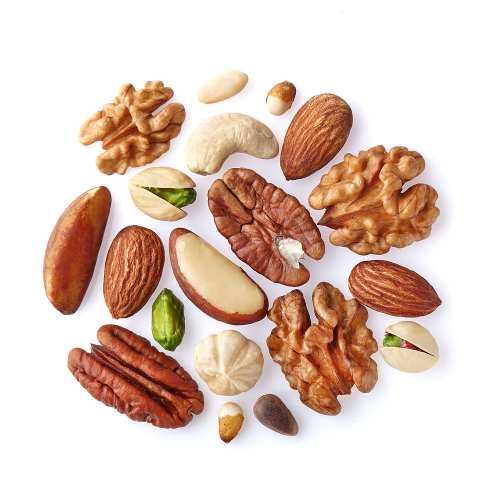The ketogenic diet is a high-fat, moderate-protein, and low-carbohydrate eating plan designed to switch your body’s energy source from carbohydrates to fat. While this metabolic shift enhances fat burning and endurance, it can also impact strength training, high-intensity workouts, and recovery. Optimizing your workout routine while on keto requires a strategic approach to nutrition, hydration, and training adaptation.
This SEO-optimized guide covers science-backed strategies for maximizing fat loss, strength, and performance while following a ketogenic diet.
How the Keto Diet Affects Exercise and Energy Levels
A traditional high-carb diet relies on glycogen (stored carbohydrates) as the primary fuel source. In contrast, the keto diet shifts the body into nutritional ketosis, where it burns fat and produces ketones for energy (NCBI).

- Increased Fat Oxidation: The body becomes more efficient at burning fat, improving endurance performance.
- Lower Glycogen Stores: With fewer carbs, glycogen levels decline, affecting explosive and anaerobic activities.
- Enhanced Ketone Utilization: Muscles and the brain adapt to using ketones, helping sustain energy during extended workouts.
To maximize workout efficiency on keto, selecting the right exercise types, nutrient timing, and recovery strategies is essential.
Best Workouts for a Ketogenic Lifestyle
Each workout type affects keto performance differently. Understanding which exercises align best with ketosis will help you achieve your fitness goals while maximizing fat burning.

1. Low-Intensity Steady-State (LISS) Cardio
Best for: Fat burning, endurance, and aerobic fitness.
- Examples: Walking, cycling, swimming, rowing, hiking.
- Keto Advantage: LISS workouts rely on fat oxidation, making them ideal for those in ketosis.
- Pro Tip: Perform LISS in a fasted state to accelerate fat burning (Healthline).
2. High-Intensity Interval Training (HIIT)
Best for: Fat loss, metabolic conditioning, and anaerobic endurance.
- Examples: Sprints, CrossFit, circuit training, kettlebell workouts.
- Keto Challenge: HIIT workouts depend on glycogen, which is limited on keto.
- Optimization Strategy: Follow a Targeted Ketogenic Diet (TKD)—consume 15-30g of carbs pre-workout to boost glycogen levels (me).
3. Strength Training & Muscle Building
Best for: Muscle retention, strength gains, and metabolic rate improvement.
- Examples: Weightlifting, resistance bands, calisthenics, powerlifting.
- Keto Benefit: Keto helps preserve muscle mass when protein intake is adequate.
- Optimization Strategy:
- Consume 6-2.2g of protein per kg of body weight.
- Consider a Cyclic Ketogenic Diet (CKD)—increase carb intake 1-2 days per week for muscle glycogen replenishment (me).
4. Endurance Training
Best for: Long-distance running, cycling, swimming, and triathlons.
- Keto Benefit: Fat adaptation enhances endurance by providing a long-lasting fuel source.
- Considerations:
- Maintain electrolyte balance to prevent fatigue.
- Some endurance athletes benefit from a hybrid keto approach—strategic carb intake before intense endurance events (Frontiers in Physiology).
How to Optimize Performance on Keto
To maximize fat-burning and athletic performance, follow these essential strategies:
1. Use Strategic Carb Timing (TKD & CKD Approaches)
- Targeted Keto Diet (TKD): Consume 15-30g of carbs pre-workout for high-intensity training.
- Cyclic Keto Diet (CKD): Implement weekly carb refeed days to replenish glycogen for strength and muscle growth.
2. Prioritize Protein for Muscle Maintenance
- Consume 6-2.2g of protein per kg of body weight for optimal muscle recovery.
- Avoid excessive protein intake that could trigger gluconeogenesis, potentially slowing ketosis.
3. Optimize Electrolytes and Hydration
- Electrolyte depletion on keto can cause muscle cramps and fatigue.
- Increase sodium, potassium, and magnesium intake with bone broth, mineral water, and electrolyte supplements (Healthline).
4. Adapt to Keto Before Intense Training
- Allow 3-6 weeks for full keto adaptation.
- Performance may dip initially but improves as fat oxidation efficiency increases (mdpi).
5. Monitor Recovery and Adjust Workouts
- Ensure adequate sleep and stress management.
- Incorporate active recovery sessions like yoga, stretching, or mobility work to improve muscle function and flexibility.
Conclusion: Can You Work Out on Keto?
Yes! Keto workouts require minor adjustments, but with the right approach, you can build strength, improve endurance, and optimize fat loss.
✔ Use LISS cardio for fat-burning and endurance.
✔ Incorporate targeted carbs for HIIT and intense training.
✔ Prioritize protein, hydration, and electrolytes.
✔ Give your body time to adapt before intense exercise.
By following these science-backed workout strategies, you can ensure peak performance and sustained fat loss while thriving on a ketogenic diet.
References
- NCBI – “Nutritional Ketosis and Physical Performance.” Read more
- Mdpi – Keto-Adaptation and Endurance Exercise Capacity, Fatigue Recovery, and Exercise-Induced Muscle and Organ Damage Prevention: A Narrative Review.” Read more
- Frontiers in Physiology – “Effects of a Ketogenic Diet on Exercise Performance.” Read more
- Ruled.me – “Complete Guide to Exercise on a Ketogenic Diet.” Read more
- Healthline – “Working Out on Keto: What to Know.” Read more
- Lionel University – “Are HIIT Training and Ketogenic Diets Compatible?” Read more

 Animal-Based Foods
Animal-Based Foods 


 Fruits & Vegetables
Fruits & Vegetables 


 Nuts, Seeds & Grains
Nuts, Seeds & Grains 


 Beverages
Beverages 

 Oils, Sauces & Condiments
Oils, Sauces & Condiments 



 Packaged & Processed Foods
Packaged & Processed Foods 




